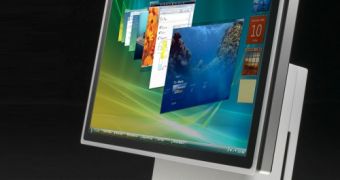Microsoft has taken extensive steps in order to ensure that Windows 7 computers will be able to play the role of media hubs for home users. In addition to the native support for the new file formats, the next iteration of the Windows client is also designed to play nice with a wide range of DLNA certified devices. In this regard, Microsoft informs that it has implemented DLNA device roles and the DLNA protocols designed to permit communications and media exchange. This move has made Windows 7 capable of interoperability with TVs, stereo systems, cell phones, DVRs, game consoles, and additional devices, provided that they sport the Digital Living Network Alliance logo.
“The Digital Living Network Alliance (DLNA) is a consortium of more than 200 companies interested in specifying technologies for exchanging media in home networks. The DLNA architecture is based on the UPnP specification, but in addition, DLNA specifies transport protocols (based on HTTP and RTP) and sets of media formats,” revealed Scott Manchester, from the Devices & Media program management team. “DLNA defines device roles (e.g. servers, players, renderers, etc.) and the protocols that these devices use to discover each other and communicate with each other (e.g. UPnP, HTTP, RTP, etc.).”
There are a variety of scenarios in which customers will be able to take advantage of the new DLNA device roles and protocols available in Windows 7. Of course, the operating system will need to interoperate with DLNA-logoed devices. However, given that the DLNA logo is present, users will be able to navigate through videos, music and pictures stored on a Windows 7 machine from a TV, because the Windows 7 PC assumes the role of a DMS (document management system).
In addition, the successor of Windows Vista can also “stretch” all the way to a Network Attached Storage (NAS) device, and permit users to access stored content, including videos, pictures and music via Windows Media Player. From a DLNA phone, content can be viewed directly on the Windows 7 PC without the media files having to actually be transferred. On top of this, from a Windows 7 machine music can be played on a stereo featuring the DLNA logo via the “Play to” option.
32-bit and 64-bit Windows 7 (Release Candidate) RC Build 7100.0.090421-1700 is available for download here.

 14 DAY TRIAL //
14 DAY TRIAL //